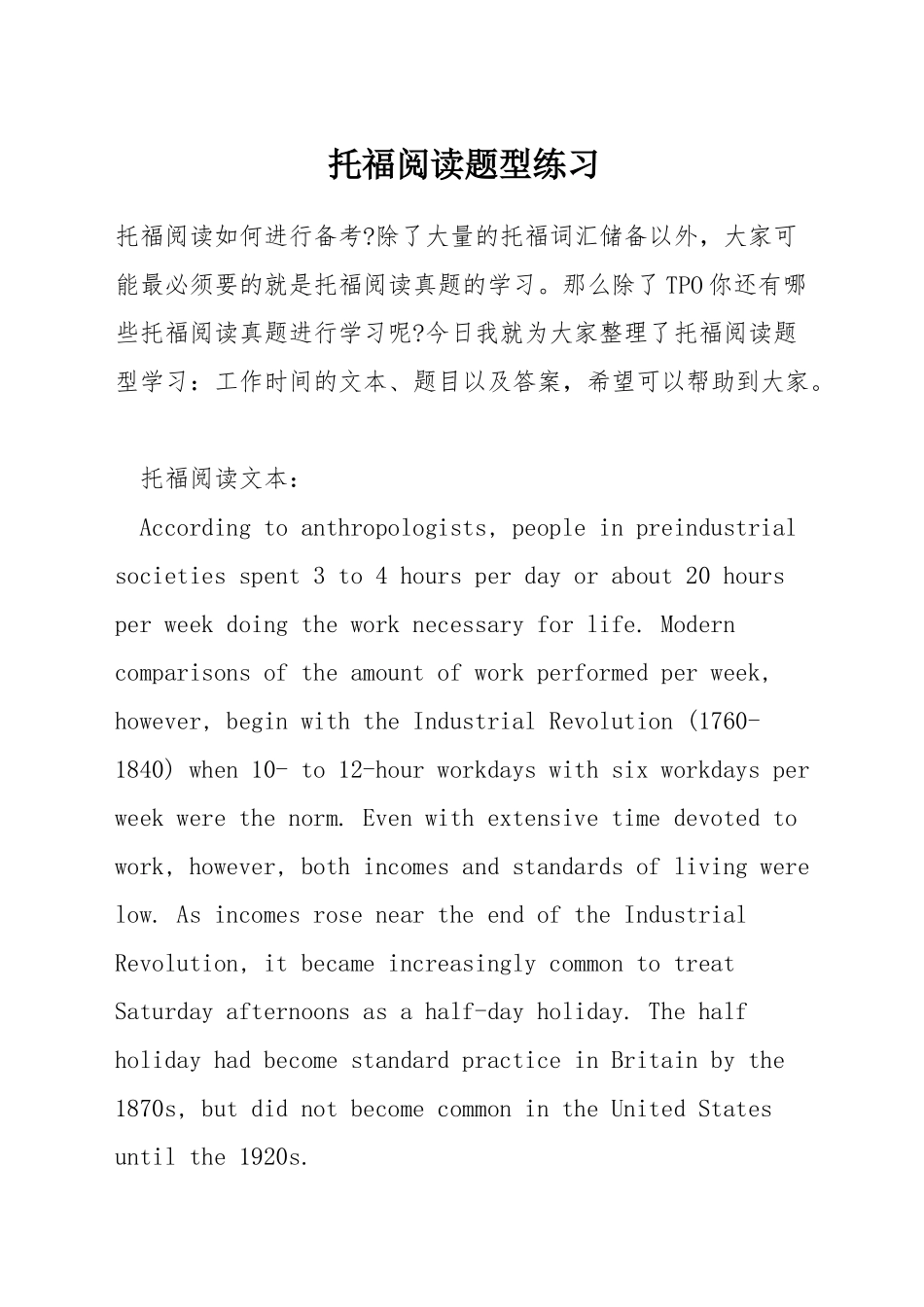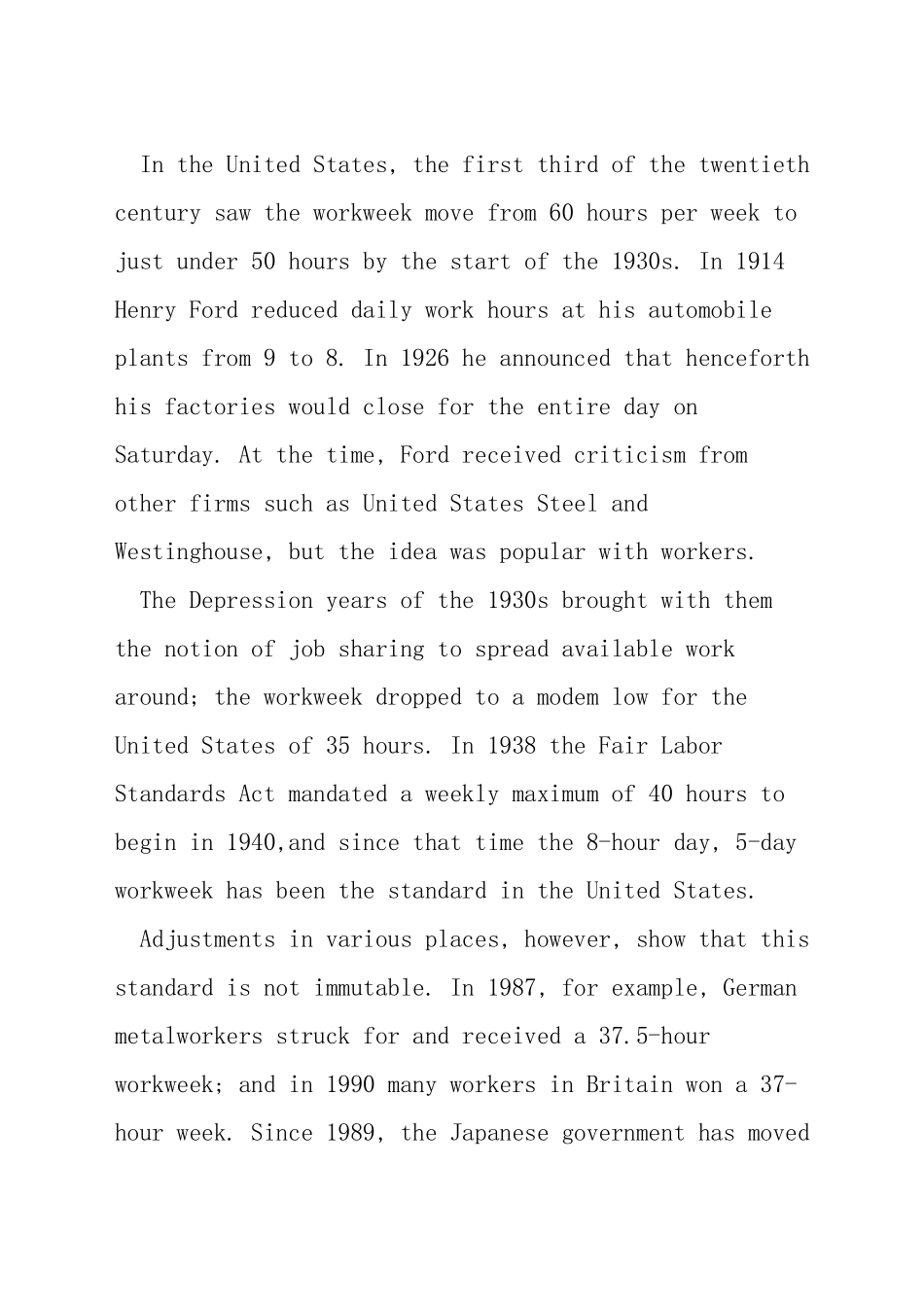托福阅读题型练习托福阅读如何进行备考?除了大量的托福词汇储备以外,大家可能最必须要的就是托福阅读真题的学习。那么除了 TPO 你还有哪些托福阅读真题进行学习呢?今日我就为大家整理了托福阅读题型学习:工作时间的文本、题目以及答案,希望可以帮助到大家。 托福阅读文本: According to anthropologists, people in preindustrial societies spent 3 to 4 hours per day or about 20 hours per week doing the work necessary for life. Modern comparisons of the amount of work performed per week, however, begin with the Industrial Revolution (1760-1840) when 10- to 12-hour workdays with six workdays per week were the norm. Even with extensive time devoted to work, however, both incomes and standards of living were low. As incomes rose near the end of the Industrial Revolution, it became increasingly common to treat Saturday afternoons as a half-day holiday. The half holiday had become standard practice in Britain by the 1870s, but did not become common in the United States until the 1920s. In the United States, the first third of the twentieth century saw the workweek move from 60 hours per week to just under 50 hours by the start of the 1930s. In 1914 Henry Ford reduced daily work hours at his automobile plants from 9 to 8. In 1926 he announced that henceforth his factories would close for the entire day on Saturday. At the time, Ford received criticism from other firms such as United States Steel and Westinghouse, but the idea was popular with workers. The Depression years of the 1930s brought with them the notion of job sharing to spread available work around; the workweek dropped to a modem low for the United States of 35 hours. In 1938 the Fair Labor Standards Act mandated a weekly maximum of 40 hours to begin in 1940,and since that...


